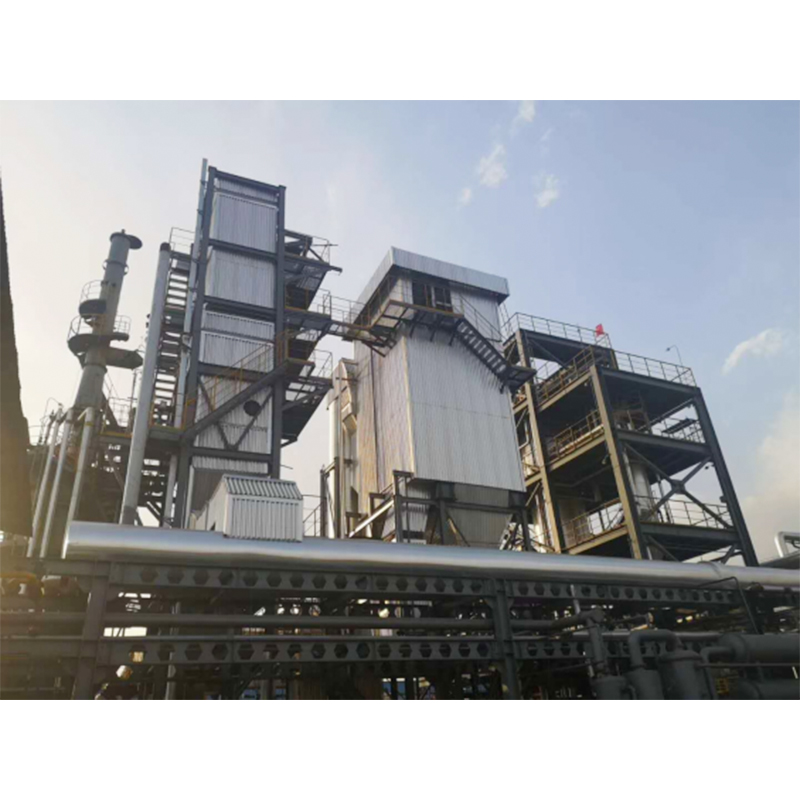Desulfurization and Dust Removal Project
**Desulfurization and dust removal project** is a treatment technology for sulfur dioxide (SO₂) and particulate matter (PM) in industrial waste gas, aiming to reduce harmful substances in the air, meet environmental emission standards, and reduce harm to the environment and human health. Desulfurization and dust removal projects are widely used in waste gas treatment in thermal power generation, steel, chemical, metallurgy and other industries. The following are the application scenarios, uses, characteristics and advantages of this project
### Application scenarios
- **Thermal power plants**: In the process of coal-fired power generation, a large amount of sulfur dioxide and smoke generated by coal combustion are the main pollutants. Desulfurization and dust removal projects can effectively remove sulfur dioxide and particulate matter in the exhaust gas.
- **Steel and metallurgical industry**: Exhaust gas from steelmaking, sintering and other processes contains sulfur dioxide and dust. Desulfurization and dust removal projects help to control these pollutants.
- **Cement industry**: The exhaust gas generated by cement kilns burning at high temperatures contains a lot of sulfur dioxide and fine particulate matter. Desulfurization and dust removal technology can remove these pollutants.
- **Petrochemical and chemical companies**: The exhaust gas generated in the petrochemical process may also contain sulfur dioxide and particulate matter. Desulfurization and dust removal projects can help reduce these harmful emissions.
- **Waste incineration plant**: The exhaust gas generated by waste incineration usually contains high concentrations of sulfur dioxide and particulate matter. Desulfurization and dust removal projects can effectively treat them.
### Applications
- **Sulfur dioxide removal**: Desulfurization technology mainly removes sulfur dioxide from waste gas through chemical absorption, catalytic reduction and other methods to reduce its pollution to air quality.
- **Particulate matter removal**: Dust removal technology removes fine particulate matter from waste gas through electrostatic precipitators, bag filters and other means to reduce solid pollutants in the atmosphere.
- **Reducing pollutant concentration**: Through desulfurization and dust removal treatment, the emission of pollutants such as sulfur dioxide and particulate matter is reduced to ensure that the waste gas meets environmental emission standards.
- **Waste gas purification**: Help enterprises to achieve waste gas purification, so that the waste gas meets emission requirements, complies with environmental laws and regulations, and reduces environmental pollution.
### Features
- **Multiple pollutant control**: Desulfurization and dust removal projects usually combine desulfurization and dust removal technologies, which can effectively remove sulfur dioxide and particulate matter from waste gas for comprehensive control.
- **Strong adaptability**: According to different industrial waste gas characteristics and pollutant components, a suitable combination of desulfurization and dust removal technologies can be selected, which has strong flexibility.
- **High efficiency**: Desulfurization and dust removal technology has a high removal efficiency and can significantly reduce pollutant emissions.
- **Technology diversity**: Common desulfurization technologies include wet desulfurization, dry desulfurization, semi-dry desulfurization, etc., while dust removal technologies include electrostatic precipitator, bag dust removal, etc., and appropriate technologies can be selected according to actual needs.
- **System integration**: Desulfurization and dust removal systems are usually designed as integrated systems, which are easy to operate, maintain and manage, ensuring long-term and stable operation of equipment.
### Advantages
- **Significant environmental protection effect**: Through desulfurization and dust removal technology, sulfur dioxide and particulate matter emissions in exhaust gas can be greatly reduced, air quality can be significantly improved, and environmental pollution can be reduced.
- **Compliance with environmental regulations**: Desulfurization and dust removal projects help companies meet the strict requirements of countries or regions on pollutant emissions, and avoid penalties or production restrictions due to excessive emissions.
- **Improve corporate image**: The implementation of desulfurization and dust removal projects helps to enhance the company's social responsibility image and demonstrate the company's efforts and investment in environmental protection.
- **Energy saving and emission reduction**: Through optimized design and reasonable selection, desulfurization and dust removal technology can improve energy utilization efficiency and reduce energy waste in the production process.
- **Reduce health risks**: Reducing sulfur dioxide and particulate matter emissions helps reduce the impact of air pollution on residents' health and reduce respiratory diseases caused by pollution.
- **Low operating costs**: Some desulfurization and dust removal technologies have low operating and maintenance costs, which can help companies reduce long-term operating expenses.
- **Continuous technology upgrade**: With the improvement of environmental protection standards, desulfurization and dust removal technologies can continue to meet increasingly stringent emission requirements through technical upgrades and transformations to ensure long-term compliance operations.
### Summary
The desulfurization and dust removal project is a comprehensive treatment solution for sulfur dioxide and particulate matter pollutants, which is widely used in thermal power generation, steel, chemical and other industries. The project can not only effectively reduce pollutant emissions, but also help companies save energy and reduce emissions, comply with environmental protection regulations, and improve their social responsibility image. Through efficient desulfurization and dust removal technologies, companies can reduce environmental pollution, protect public health, and improve economic benefits while achieving environmental protection goals.

